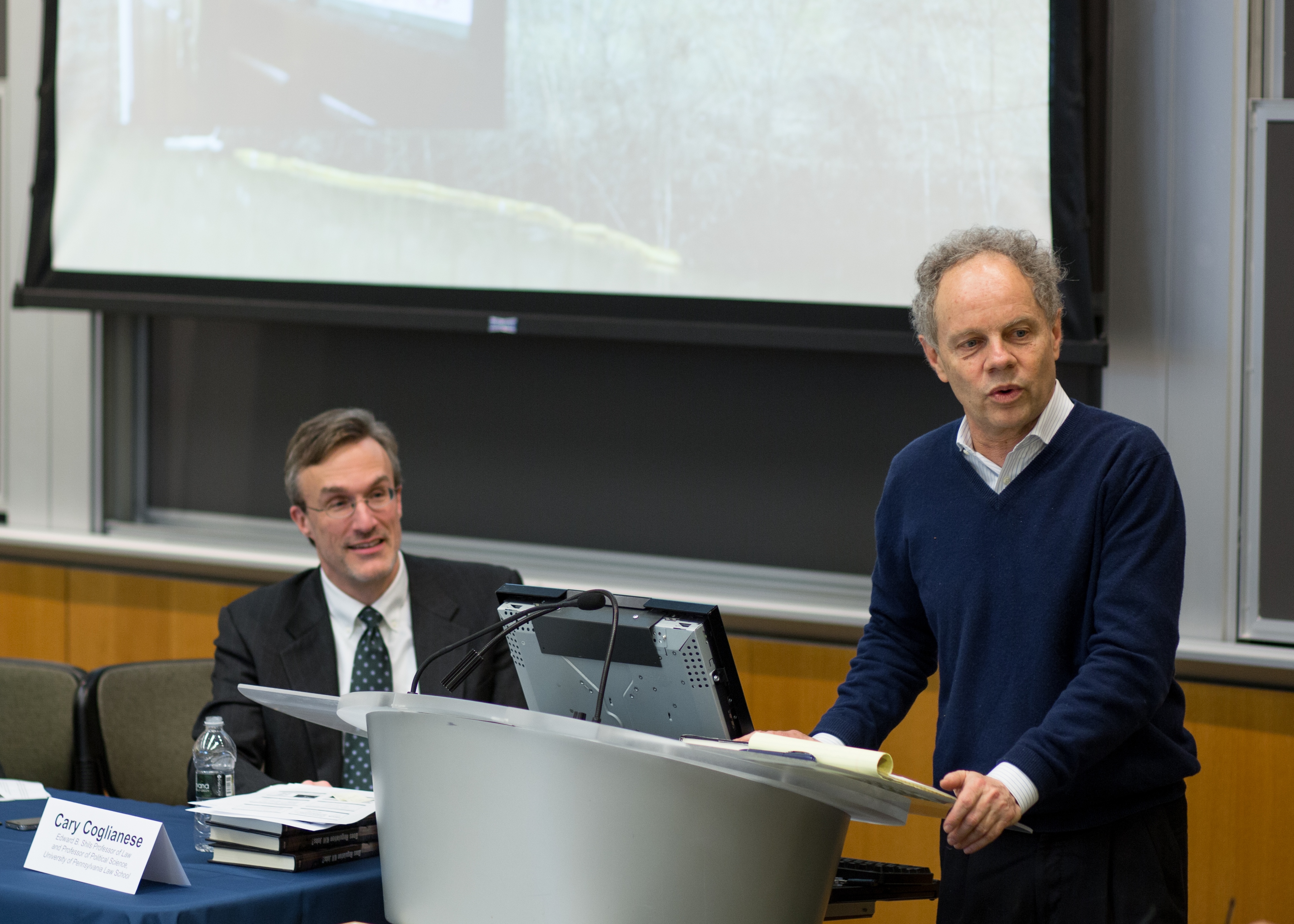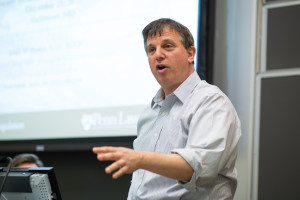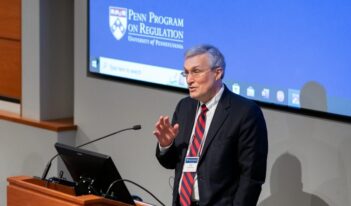
Wharton School panel discussion assesses new book on how regulations affect employment.

Cary Coglianese, Director of the Penn Program on Regulation and Edward B. Shils Professor of Law and Professor of Political Science
Competing and extreme claims about the relationship between regulation and jobs pervade political debate in Washington, D.C. Some politicians claim that regulations kill significant numbers of jobs by increasing the cost of production, while others claim that regulations create jobs by creating new products and new opportunities for investment. Ultimately this heated debate provides little insight into what is, at root, an important empirical question in an era of bleak economic conditions: Do regulations actually kill jobs?
As the United States struggles with a high unemployment rate in the wake of the Great Recession, it is worth examining carefully the relationship between jobs and regulation, as well as possible policy responses to it. A recent panel discussion held at the Wharton School at the University of Pennsylvania sought to do just that.
The panel, organized around the recent publication of the book Does Regulation Kill Jobs?, showed how difficult it is to find any evidence to support claims that regulations systematically kill jobs. Political rhetoric notwithstanding, the book’s introductory chapter states that “the existing empirical research suggests that regulation does relatively little to reduce or increase overall jobs in the United States.”

Sarah L. Stafford, Professor of Economics, Public Policy and Law at the College of William & Mary
In introducing the panel, Professor Cary Coglianese, Director of the Penn Program on Regulation and one of the co-editors of the new book, reviewed the existing research showing that regulation has, at most, relatively small aggregate effects on jobs. However, he suggested, more discrete employment effects do exist, they impose real burdens on individuals and their families, and their distribution across different states, sectors, or firms can vary. These differentially distributed effects give rise to concern among elected officials – all politics, after all, being local. Coglianese said the new book is premised on the idea that better analysis of employment effects would provide relevant information to decision makers.
The Penn panel featured two distinguished commentators who shared their own views about the new book and its timely topic.
Sarah L. Stafford, Professor of Economics, Public Policy and Law at the College of William & Mary, explained how the cascading effects of a specific regulation can ripple throughout the economy, making it exceedingly difficult to capture all the full effects of an individual rule on employment. Using a hypothetical example of a regulation aimed at reducing environmental impacts from fracking, she showed that a full accounting of how such a regulation would affect employment would require forecasting effects not only in the fracking industry, but in other aspects of the energy sector, in communities surrounding fracking operations, and in the overall impacts of energy prices throughout the economy. Discerning both the direct and indirect effects of regulation on employment presents difficult analytic challenges that will need to guide future research.
Richard L. Revesz, Lawrence King Professor of Law and Dean Emeritus at New York University Law School, recognized the challenges currently associated with estimating the employment effects of regulation. But he noted that economists and policy analysts have successfully overcome similar methodological challenges in estimating risks and the costs and benefits of regulation more generally. With a concerted effort at additional research and analysis, he argued, agencies could do a better job of developing reliable estimates of job impacts, which would be better than allowing these effects to continue to be exaggerated in political discourse.

Adam Finkel, Executive Director of the Penn Program on Regulation
One of the other co-editors of the book, Adam Finkel, the Executive Director of the Penn Program on Regulation, responded to the commentators and offered some concluding reflections. Tracing the history of methodological improvements in the quantitative risk assessment of environmental and workplace hazards, he drew an important parallel between the tendency in the early history of risk assessment to exaggerate the likely magnitude of risks and the current tendency of claims about employment to exaggerate both the number of jobs that could be lost via regulation and the welfare toll of each lost job. Just as it’s a fallacy to claim that a concerted program to break windows would “create jobs,” Finkel argued, it’s also true that the invention of an unbreakable window would change the labor market but would not ruin it.
Does Regulation Kill Jobs? outlines strategies for better analyzing job impacts and considers possible reforms to the regulatory process that would better incorporate this analysis into decision making. Edited by Coglianese, Finkel, and Christopher Carrigan, a former fellow at the Penn Program on Regulation, the book was recently released by the University of Pennsylvania Press.




